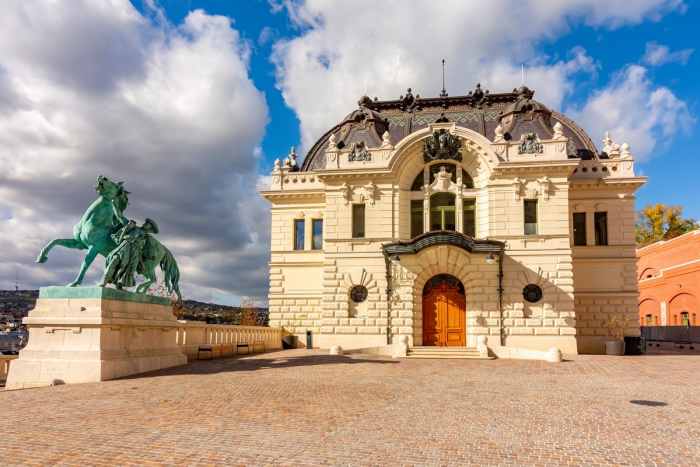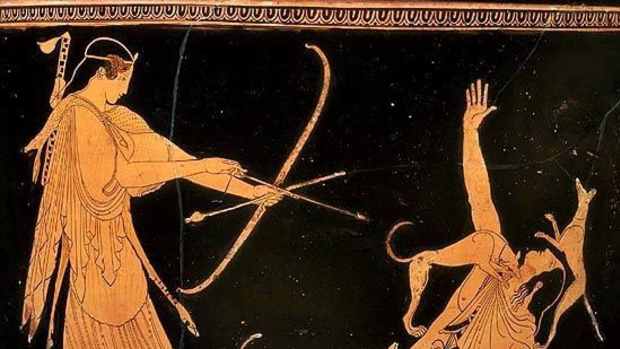History of Hungary's Buda Castle and Its Rebirth
The Castle at the Heart of Buda
One of the oldest and perhaps the most beautiful parts of Budapest is the Castle District. The fascinating historical area includes Buda Castle with the Royal Palace and the surrounding sights perched on the top of Castle Hill.
Many sightseeing trips begin here of the iconic attractions of Budapest, like Matthias Church, Trinity Square, the Hungarian National Gallery (the former royal palace), Ruszwurm Confectionery, Hospital in the Rock or the ruins of the Church of St Mary Magdalene.
The hill is about 50–60 metres high, and it has been inhabited since the Bronze Age; it is a symbolic site of the Hungarian nation and a keystone of national identity. During the more than 700-year-long history of the castle, periods of construction and demolition, creation and destruction have alternated.




Brief History of Buda Castle and Castle Hill
Castle Hill was first settled and fortified in the 13th century by King Béla IV after the devastating Mongol invasion of 1241. This formed part of the king's decree that fortified towns be built across Hungary; it also ordered that people previously living at the foot of the hill move up onto Castle Hill itself.
Castle Hill is located on a rocky perch that rises above a spot that was frequently used to cross the Danube River flowing through the city. Over the centuries, Buda became both the residence of the kings and the capital of the country.
The Royal Court was established on the hill, and the long golden age of the district began. In the 14th century, the Anjou dynasty built a Gothic palace that was then considerably enlarged by King Sigismund of Luxembourg. Despite not being a new city, Buda became increasingly important in Europe during the 15th century when its population was estimated to have been around 8,000.
King Matthias, who reigned from 1458 to 1490, reconstructed the Royal Palace in the Italian Renaissance style, becoming the first of its kind among European royal courts.
Starting with the Turkish occupation of Buda in 1541, the palace began to fall into ruin, and by the time the town was liberated in 1686, it was almost fully destroyed.
When the Turks were finally expelled, the Habsburg royal family of Austria took power over Hungary. As part of the Austrian Empire, Hungary, together with Buda and Pest flourished, entering a period of social, cultural and economic advancement.
Restorations Begin
During the period of Austrian rule, the Royal Palace was rebuilt many times over. Later the Matthias Church was extended and then was extensively restored in the late 19th century in the Gothic style.
Fisherman's Bastion was then built around Matthias Church as part of the series of developments that were to celebrate the 1,000-year anniversary of the Hungarian state. The Bastion was inspired by the architectural style of early Mediaeval times known as Neo-Romanesque and based approximately on the year 1000 A.D. when the first Hungarian king began his rule.
Recommended
Reconstruction During the 19th Century
In the last decades of the 19th century, Budapest experienced fast economic development. Ambitious planning projects were carried out to express the growing wealth and higher status of the Hungarian capital.
The iconicity of Buda Castle was brought to attention yet again through more modern architectural programs put into motion during this time. The aim of Hungary's government was to create a royal palace to match those of other iconic European royal residences.
Castle Garden Bazaar and Castle Garden Kiosk
First, the Castle Garden Bazaar and Castle Garden Kiosk (Várkert-bazár, Várkert-kioszk) were built on the embankment of the Danube River, at the foot of the Castle Hill, between 1875 and 1882. They were based on designs by Miklós Ybl, a famous Hungarian architect.
The spectacular building of Castle Garden Kiosk was once the pump room for Castle Hill's water system. At the end of the 19th century, it was transformed into a charming coffee house. The Bazaar stretches along the foot of Castle Hill; constructed in 1882, it was then fully renovated between 2011 and 2014.
Rebuilding the Royal Palace
In 1882, Prime Minister Kálmán Tisza charged Ybl with drawing up a master plan for rebuilding the Royal Palace of Buda. In his plan, Ybl preserved the old Baroque palace but mirrored it on the western side of the principal court, which effectively doubled the size of the building.
He also planned a new carriageway on the western hillside, which required demolishing mediaeval walls and towers. The narrowness of the natural plateau of Castle Hill meant there was not enough space for the new wing, which Ybl solved by erecting a substructure that stretched down to the foot of the hill. The monumental western façade sits on this windowless, three-storey high substructure.
The whole block covered almost the entire hill, but the main façade of the principal court had the same modest height as the Baroque residence. The façade was clad with stone slabs, while the old parts were stuccoed. The formerly open principal court—Lion’s Court or Oroszlános udvar in Hungarian—became a closed court with an arched gateway guarded by four lion sculptures.
Alajos Hauszmann Takes the Reigns
Ybl finally began reconstruction in 1890, but upon his death in 1891, his successor, Alajos Hauszmann, took control of the project. Hauszmann was another noted Hungarian architect himself and modified parts of the original plan slightly.
The Krisztinaváros wing was completed in the spirit of its predecessor, and the foundation stone for the extension of the Danube side was laid in 1896 by Franz Joseph I (the Emperor of Austria and King of Hungary).
In 1893, the 25th anniversary of King Joseph's coronation was celebrated in the Royal Palace. However, the old banqueting hall proved to be too small, so Hauszmann decided to enlarge the room by knocking down and reconstructing a wall.
Plans Are Redrawn
He extended the northern wing to Szent György tér, thus creating a symmetrical ensemble that fit harmoniously into the cityscape and was larger than the parliament building. He erected a portico, an open decorative staircase, while the whole palace was topped with a dome and a copy of the Holy Crown of Hungary at its apex.





